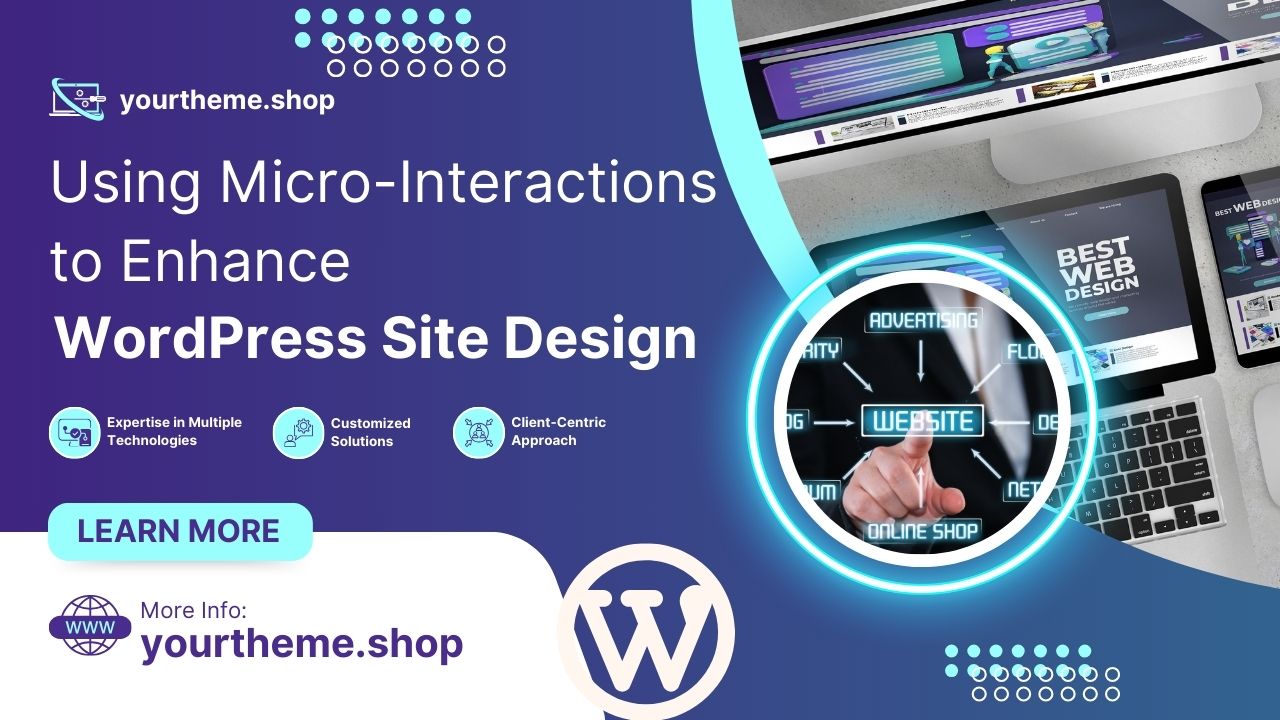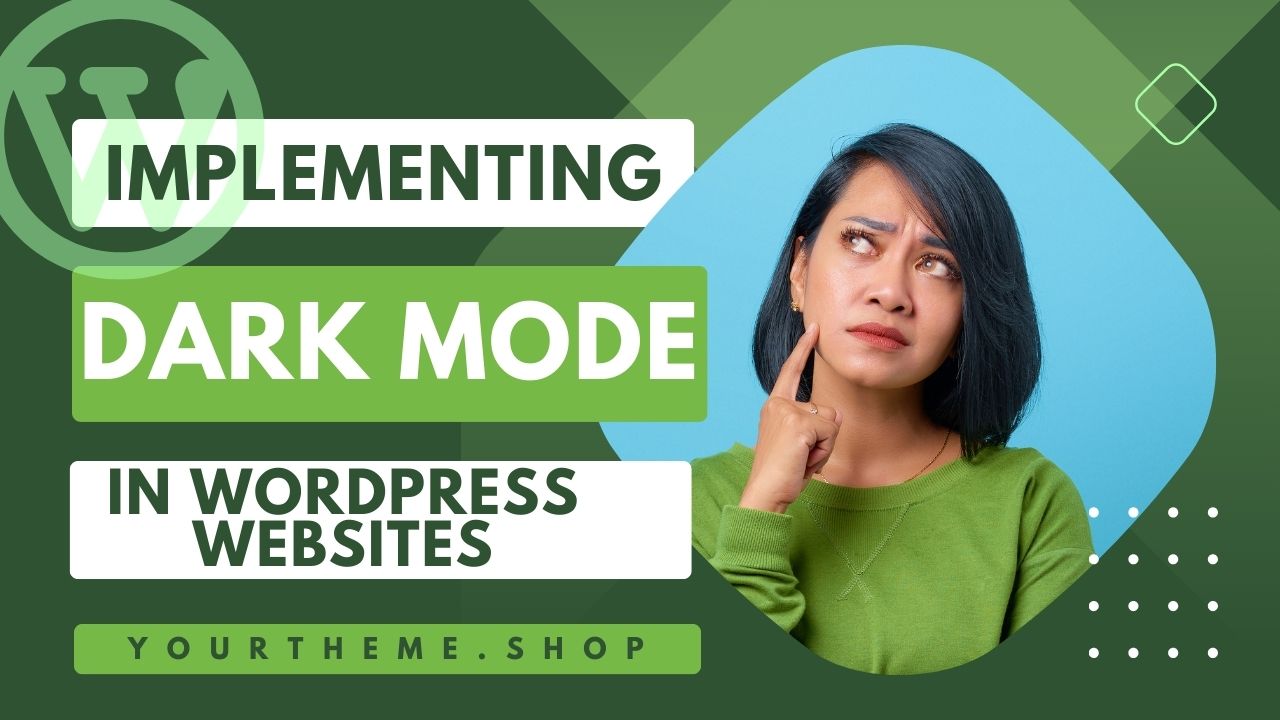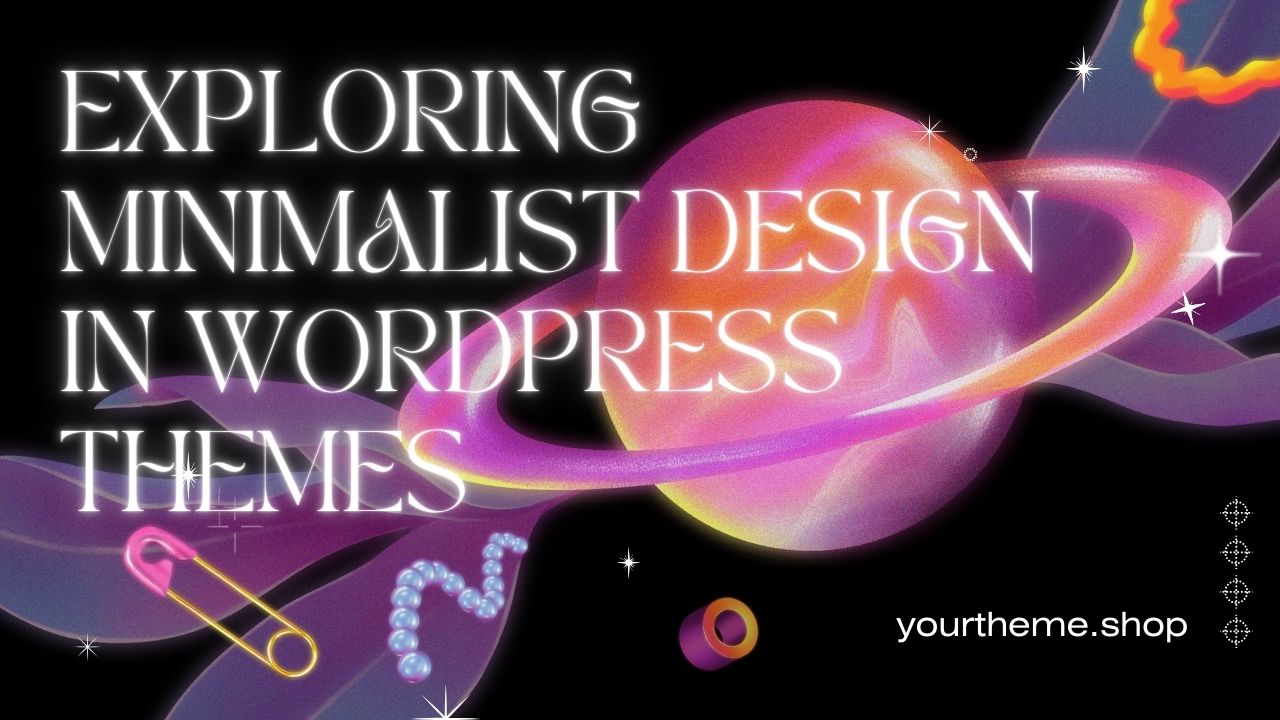Using Micro-Interactions to Enhance WordPress Site Design
Welcome to a world where user engagement thrives through the subtle but impactful use of micro-interactions. In this comprehensive guide, I’ll walk you through the art of Using Micro-Interactions to Enhance WordPress Site Design. We’ll explore how to create engaging micro-interactions tailored for WordPress websites, discover the best WordPress plugins for incorporating micro-interactions into your site’s design, and showcase real-world examples of effective micro-interactions within WordPress site layouts. Let’s dive into the captivating world of micro-interactions.
Enhancing User Engagement with Micro-Interactions
The Power of Micro-Interactions
In the digital realm, where user experiences matter more than ever, micro-interactions have emerged as the unsung heroes of web design. These subtle, yet impactful animations, transitions, and responses occur when users engage with a website. While they may seem minor in isolation, the cumulative effect of micro-interactions is nothing short of transformative. In this in-depth exploration, we delve into the realm of micro-interactions, uncovering their potential for Using Micro-Interactions to Enhance WordPress Site Design, crafting engaging micro-interactions tailored for WordPress websites, exploring the landscape of WordPress plugins dedicated to adding micro-interactions to site design, and dissecting real-world examples of effective micro-interactions within WordPress site layouts. Let’s harness the power of micro-interactions to elevate your WordPress site’s design and user experience.
Unveiling the Magic of Micro-Interactions
Defining Micro-Interactions
Before we dive into their significance, let’s define micro-interactions. These are the small but delightful animations, transitions, and responses that unfold when users interact with a website. Micro-interactions serve as the digital body language of your site, communicating with users on a subconscious level. They encompass actions like clicking a button, hovering over an element, or submitting a form.
Micro-Interactions: The Engagement Catalyst
Micro-interactions may be subtle, but their impact on user engagement and satisfaction is profound. Here’s how they work their magic:
- Feedback Mechanism: Micro-interactions provide instant feedback, reassuring users that their actions are registered. A button press results in a subtle animation, confirming the click’s success.
- Guiding Users: These interactions guide users through processes seamlessly. Think of a progress indicator during a multi-step form submission; it’s a micro-interaction ensuring users stay oriented.
- Personality and Delight: Micro-interactions add personality and delight to your website’s design. They make the user experience memorable and enjoyable.
Crafting Engaging Micro-Interactions for WordPress Websites
The Art of Creating Moments
Crafting engaging micro-interactions for your WordPress website requires a keen eye for detail and a deep understanding of your audience. Here’s how you can excel in this art:
1. User-Centric Approach
Keyword: Creating engaging micro-interactions for WordPress websites
Understand your audience’s preferences and expectations. Tailor micro-interactions to enhance their experience and align with your site’s purpose.
2. Purposeful Animation
Every micro-interaction should serve a purpose. Whether it’s providing feedback, simplifying navigation, or adding aesthetic appeal, ensure that each animation has a clear intent.
3. Harmonious Integration
Keyword: Using Micro-Interactions to Enhance WordPress Site Design
Integrate micro-interactions seamlessly into your site’s design. They should feel like a natural part of the user journey, enhancing usability without distractions.
Exploring WordPress Plugins for Micro-Interactions
Elevating Your Design with Plugins
WordPress simplifies the process of adding micro-interactions to your site with a range of dedicated plugins. Here are a couple of standout options:
1. Animate It!
Keyword: WordPress plugins for adding micro-interactions to site design
Animate It! is a user-friendly plugin designed to empower you with animation capabilities. It lets you effortlessly incorporate micro-interactions that captivate your audience and enrich user engagement.
2. Elementor
Keyword: Using Micro-Interactions to Enhance WordPress Site Design
Elementor, a versatile page builder plugin, equips you with advanced design tools. With its intuitive interface and an extensive library of widgets, you can create captivating micro-interactions that enhance your site’s aesthetics.
Dissecting Examples of Effective Micro-Interactions in WordPress Site Layouts
Real-World Inspiration
To truly grasp the potential of micro-interactions, let’s dissect some real-world examples of effective implementations within WordPress site layouts:
1. Button Hover Effects
When it comes to enhancing user engagement on your WordPress site, the subtlety of micro-interactions can make all the difference. In this section, we’ll dive deep into the world of micro-interactions, focusing specifically on the captivating Button Hover Effects. This micro-interaction showcases the power of micro-interactions in communicating interactiveness and guiding users toward desired actions.
The Significance of Micro-Interactions
Elevating User Engagement
Micro-interactions are the unsung heroes of web design, creating meaningful connections with your audience. They serve as silent communicators, adding an extra layer of interactivity and engagement to your site.
Keyword: Using Micro-Interactions to Enhance WordPress Site Design
To truly understand their significance, we need to explore practical examples, starting with the enchanting Button Hover Effects.
Consider the Subtle Transformation
A Visual Delight
Imagine this scenario: A user visits your WordPress website, and their cursor hovers over a call-to-action button. In that split second, magic happens. The button undergoes a subtle transformation – a change in color, shape, or animation. It’s a micro-interaction in action.
Encouraging Engagement
Guiding Users Effectively
This subtle transformation serves a crucial purpose: it communicates interactiveness. Users immediately grasp that the button is meant to be clicked, and this encourages them to engage further. It’s like an inviting handshake in the digital realm.
Crafting Button Hover Effects
The Artistry Behind the Interaction
Creating Button Hover Effects that resonate with your audience requires meticulous attention to detail and a touch of creativity.
Keyword: Creating Engaging Micro-Interactions for WordPress Websites
Here’s how to craft these captivating micro-interactions:
1. Understand Your Audience
To create effective Button Hover Effects, you must know your target audience’s preferences and expectations. Consider their taste in colors, visual cues, and what prompts them to take action.
2. Choose the Right Visual Transformation
The magic happens when the button transforms. It could change color, reveal a subtle animation, or morph in shape. Ensure that the transformation aligns with your website’s overall design and branding.
3. Keep it Subtle
The key to successful Button Hover Effects is subtlety. The transformation should be noticeable but not overwhelming. Users should feel that they’ve uncovered a hidden treasure, not experienced an abrupt change.
Implementation Through Plugins
WordPress Plugins for Seamless Integration
Keyword: WordPress plugins for adding micro-interactions to site design
If you’re not a coding wizard, fear not. WordPress offers an array of plugins that make implementing Button Hover Effects a breeze. Here are a few notable options:
1. Animate It!
Animate It! is a versatile plugin that allows you to add captivating animations to your WordPress site. You can easily create Button Hover Effects with this user-friendly tool.
2. Elementor
Elementor, a popular page builder plugin, empowers you to craft interactive buttons with stunning hover effects. Its drag-and-drop interface makes it accessible for users of all skill levels.
Button Hover Effects in Action
Real-Life Inspiration
Keyword: Examples of Effective Micro-Interactions in WordPress Site Layouts
To truly appreciate the impact of Button Hover Effects, let’s explore some real-life examples:
1. Airbnb
When you hover over a property listing on Airbnb, the “Book Now” button gracefully transitions from a translucent to a solid color, indicating its clickability. This subtle change encourages users to take the next step.
2. Spotify
On Spotify’s web player, hovering over a song reveals a play button, indicating that the song can be played. It’s a simple yet effective way to guide users toward engaging with the music.
2. Form Validation
When users submit a form, micro-interactions provide instant feedback on their input. For instance, if there’s an error, the input field might turn red, and if it’s correct, it might turn green. This real-time validation ensures a smoother user experience.
Micro-interactions serve various purposes, such as:
- Providing feedback when an action is performed (e.g., a subtle animation when clicking a button).
- Guiding users through processes (e.g., a progress indicator during form submission).
- Adding personality and character to your website’s design.
Creating Engaging Micro-Interactions for WordPress Websites
Crafting a Memorable User Experience
To create engaging micro-interactions for your WordPress website, consider the following:
- User-Centric Design: Understand your target audience and tailor micro-interactions to enhance their experience.
- Purposeful Animation: Ensure that every micro-interaction serves a purpose, whether it’s to provide feedback, assist with navigation, or simply delight users.
- Seamless Integration: Integrate micro-interactions harmoniously with your site’s overall design, so they feel like a natural part of the user experience.
WordPress Plugins for Adding Micro-Interactions to Site Design
Harnessing the Potential of Plugins
WordPress offers a plethora of plugins designed to simplify the process of adding micro-interactions to your site’s design. Here are some noteworthy options:
1. Animate It!
Keyword: WordPress plugins for adding micro-interactions to site design
Animate It! is a user-friendly plugin that allows you to animate various elements on your WordPress site. With a wide range of animation options, you can effortlessly incorporate micro-interactions to captivate your audience.
2. Elementor
Keyword: Creating engaging micro-interactions for WordPress websites
Elementor, a popular page builder plugin, provides advanced design capabilities. You can create captivating micro-interactions using its intuitive interface and extensive widget library.
Examples of Effective Micro-Interactions in WordPress Site Layouts
Learning from Real-World Examples
The best way to understand the power of micro-interactions is by witnessing their impact in action. Here are a few examples of effective micro-interactions in WordPress site layouts:
1. Button Hover Effects
Keyword: Examples of effective micro-interactions in WordPress site layouts
When users hover over a call-to-action button, it subtly changes color or shape, indicating its interactiveness. This micro-interaction encourages engagement and guides users toward desired actions.
2. Form Validation
Keyword: Creating engaging micro-interactions for WordPress websites
As users fill out forms, micro-interactions provide instant feedback on their input. For instance, the input field might turn green when the information is correct and red when there’s an error, ensuring a smoother user experience.




